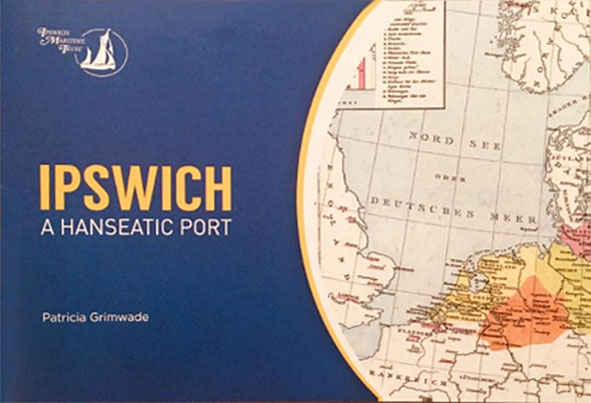- Screen Colours:
- Normal
- Black & Yellow
by Patricia Grimwade, published by Ipswich Maritime Trust, 2019 (Available for £2.00 from the Tourist Information Centre)
This 22-page booklet is well- produced and full of illustrations. Pat Grimwade describes the long history of maritime trade, particularly with east coast ports, including Ipswich, over the centuries. Resonances of today’s multinational commercial giants (Google, Facebook, Amazon etc.) can be found in the Hanseatic League. This confederation of merchant gilds in north-western and central Europe gained considerable state-like power to the point of holding the first Hanseatic parliament in Lübeck, Germany in 1358.
produced and full of illustrations. Pat Grimwade describes the long history of maritime trade, particularly with east coast ports, including Ipswich, over the centuries. Resonances of today’s multinational commercial giants (Google, Facebook, Amazon etc.) can be found in the Hanseatic League. This confederation of merchant gilds in north-western and central Europe gained considerable state-like power to the point of holding the first Hanseatic parliament in Lübeck, Germany in 1358.
Hanseatic towns developed their own legal systems and hired mercenaries for mutual aid and protection. It was, in effect a north European commercial empire which had possession of almost all of the Baltic trade. In England, outside of the major trading centre of London, there were ‘Kontore’ (headquarters of the Hanse, also known as a ‘Steelyard’) along the east coast including one at Ipswich, which developed in the 14th and 15th centuries. Ipswich became a staple port for wool: it was the sole authorised centre for wool exporting in Suffolk.
There is much here to enjoy, including for those who may not have a strong interest in maritime history. Although there is no surviving Hanseatic warehouse in Ipswich – the only one in Britain is in King’s Lynn – the influence of the Hanse on our town’s history is laid out here, including the role of powerful merchants in securing the Royal Charter for Ipswich from King John in 1200.
R.G.